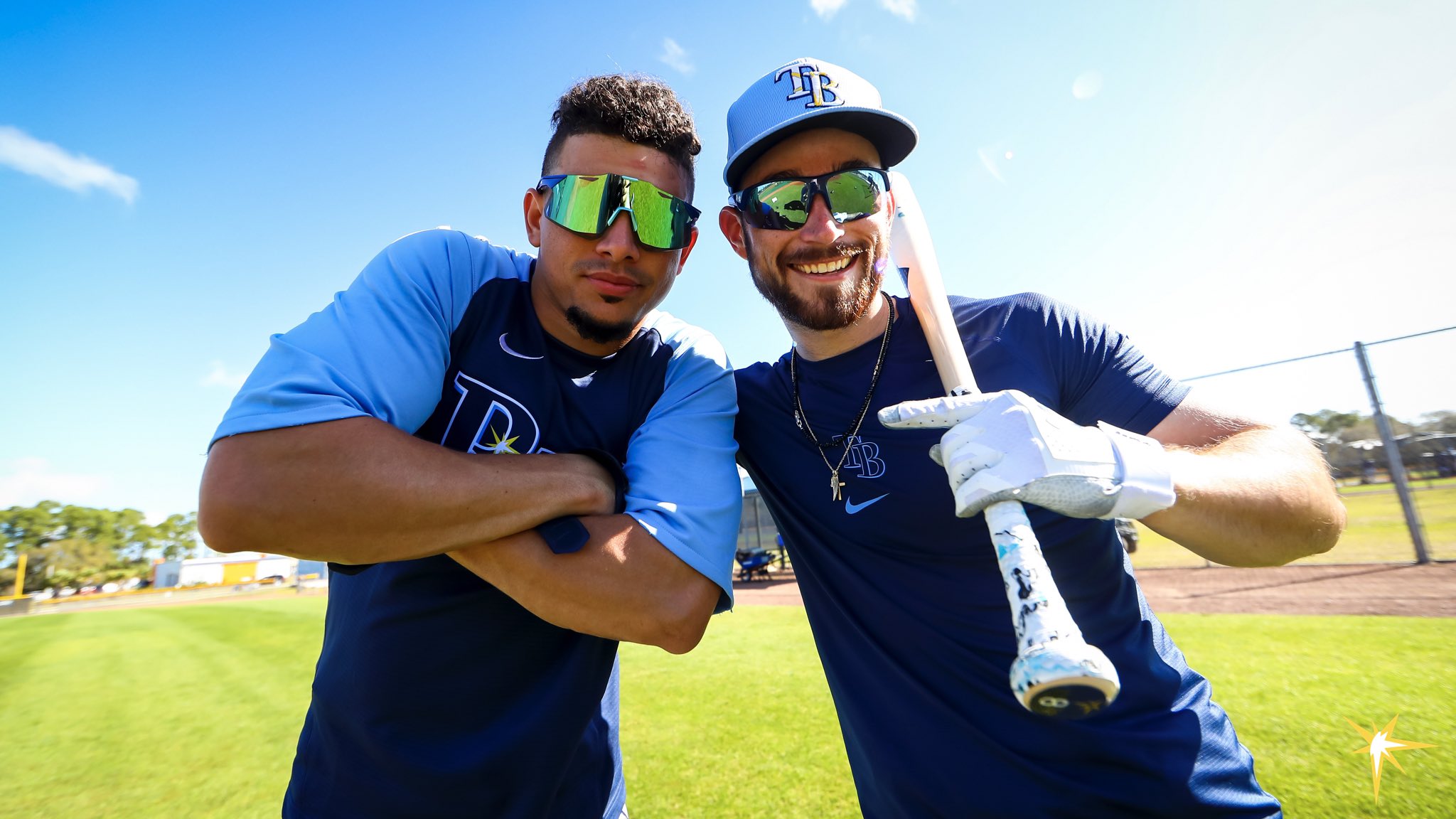
It’s Saturday, and the Tampa Bay Rays have wrapped up camp. Their focus has shifted to the 2021 Grapefruit League season. As much as we love any baseball action, Spring Training scores and statistics are mostly meaningless, especially early on. There are a few things we should be taking away from Spring Training though, and because of it, there’s no time like the present for our annual X-Rays Spex Guide to Spring Training.
Sample sizes are so small that any meaningful conclusion about a player’s performance isn’t easy to glean.
Everyday starters and players, getting serious roster consideration, will get around 60 at-bats during the spring. Why? Among other things, the first statistic to stabilize for hitters is strikeout percentage, and it takes at least 60 plate appearances to do so. Ultimately, hitters aren’t as concerned about looking the perfect pitch to incur damage upon as they are trying to get their timing down; anything above and beyond that is the icing on the cake.
Take Ildemaro Vargas for example. During the Spring Training last season, clearly prior to the shutdown, the infielder slashed .395 BA/.425 OBP/.605 SLG/1.030 OPS with a pair of home runs in 38 at-bats. He, however, slashed just .196 BA/.222 OBP/.314 SLG/.536 OPS with just one homer across 54 regular-season at-bats with three different teams. Granted he bounced around from team-to-team, however, he certainly didn’t come close to his Spring success.
Conditions for hitting in south Florida are vastly different from The Trop.
The Rays play in a dome where there is less wind resistance on a ball in flight. Compare that with Charlotte Sports Park, where a stiff breeze blowing in can turn a home run into a routine fly ball.
Pitchers aren’t as concerned about punching out batters as they are with staying healthy and building arm strength.
Pitchers are focused on getting ready for the season, not punching batters out. It takes many pitchers time to build up their arm strength. Dips in velocity are going to happen and home runs are going to happen. A pitcher might look like crap prior to Opening Day, and a handful of poor performances aren’t indicative of thei future performance.
Pitchers use Spring Training to work on pitches.
It has been written that “The time for trial and error is now. Spending time during the season experimenting with a two-seam fastball or a circle change is not a good idea. That should be reserved for side sessions and bullpens. During Spring Training, however, there is absolutely no negative impact to trying out some changes that could eventually be beneficial. Sometimes pitchers will go out to the mound only throwing fastballs away in order to work on their command over the outer half of the plate. Sometimes a pitcher will only work inside and give up a couple of bombs from missing spots.”
Tyler Glasnow, for example, is working on a new pitch — an as of now un-named cutter/slider, which likely won’t be effective until he figures out the “shape” of the pitch. Glasnow, among others, will use his Spring bump-time to work out the quirks of any given development offering.
Players are going to make errors, and that’s fine.
Cloudless skies will turn poppers into doubles, while errors from players playing out of position likely wouldn’t happen during the regular season. Furthermore, Spring Training is a time for players to prove their worth, many of whom are untested players at the big-league level. Instead, watch how they jump on the ball. Are they quick? Do they have a good range? Do their movements seem fluid or stilted? What about their arm strength?
Take note of who plays where.
As I wrote the other day, Brandon Lowe will get some reps at third base this Spring while Mike Brosseau will spend some time at short. Yoshi Tsutsugo, already capable of playing in the outfield and at third, will try to add first base to his profile.
He (Brandon Lowe) seemed open to it. It could be in-game versatility if it goes one direction, if it goes another direction maybe it’s getting some starts over there. It allows Joey (Wendle) to stay at second base, stay up the middle. We’ll play all of them different and see what we come up with.
— Kevin Cash
Meanwhile, on Saturday, Joey Wendle played second base, shortstop, and third base as he has in the past
You can’t put into words the value that he’s brought to our club on and off the field. Joey has the ability to set himself apart in that he’s kind of a glue guy. He brings everybody together. He’s as consistent as any player you could ask. The way that he goes about his work, the way that he cares about his teammates.
— Kevin Cash
All this is to give the Rays a bit more defensive flexibility.
Watch for injuries.
As Neil Solondz (Rays Radio) wrote, a handful of Rays are currently banged up.
Ji-Man Choi had some right knee soreness on Saturday and did not work out on the field. Cash says Choi was just a little bit overworked, but it was not anything serious.
That said, Choi will not start at first base on Sunday in the first exhibition game as originally planned.
Kevin Kiermaier, who has hip tightness, did work out and run on the field. Tampa Bay is expected to take it slowly with Kiermaier and he’s not expected to play in the first couple games this week.
— Neil Solondz
The win-loss record at the end of the spring means nothing.
Prior to last season’s shutdown, the Rays owned a sub-.500 record, yet went on to post the best regular-season record in the American League, culminating in a World Series berth. A Spring Training record is ultimately meaningless.

